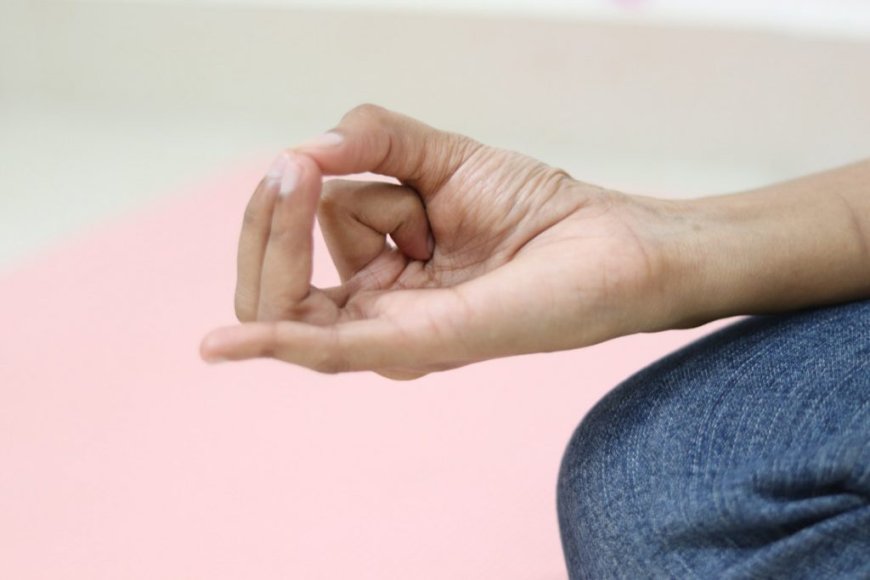Apana Vayu Mudra: Top Benefits, Steps, Precautions, and Tips for Beginners
In the world of yoga and Ayurveda, hand gestures—known as mudras—are powerful tools for healing and energy balance.

In the world of yoga and Ayurveda, hand gesturesknown as mudrasare powerful tools for healing and energy balance. One such potent mudra is Apana Vayu Mudra, also known as the "Mudra of the Heart." This yogic hand gesture is especially beneficial for heart health, calming the nervous system, and promoting internal detoxification.
Whether you are a seasoned yogi or just beginning your wellness journey, Apana Vayu Mudra can be a simple yet transformative addition to your daily routine. In this blog, well explore everything you need to know about Apana Vayu Mudra: its meaning, how to practice it, key benefits, precautions, and useful tips for beginners.
What Is Apana Vayu Mudra?
Apana Vayu Mudra is a yogic hand gesture that helps in harmonizing the flow of the Apana Vayu (the downward-moving vital energy) and Vyana Vayu (the circulating vital energy) in the body. It is often recommended for people suffering from heart ailments, hypertension, or emotional stress.
This mudra is also called the "Mritsanjeevani Mudra" (life-saving gesture), as it is known to be highly effective during heart emergencies like chest pain or palpitations.
How to Perform Apana Vayu Mudra
Apana Vayu Mudra is simple to practice and can be done anywherewhile sitting, lying down, or even walking. Here are the step-by-step instructions:
Step-by-Step Guide:
-
Sit comfortably in Sukhasana (Easy Pose), Padmasana (Lotus Pose), or on a chair with a straight spine.
-
Close your eyes and take a few deep, calming breaths.
-
On both hands:
-
Fold the index finger to touch the base of the thumb.
-
Join the tips of the middle and ring fingers with the tip of the thumb.
-
Keep the little finger straight.
-
-
Rest your hands on your knees or thighs with palms facing upward.
-
Hold the mudra for 1530 minutes, once or twice daily.
Enroll Now for 200 Hour Yoga Teacher Training in Rishikesh: https://www.rishikulyogshalarishikesh.com/200-hour-yoga-teacher-training-rishikesh.php
Top Benefits of Apana Vayu Mudra
Apana Vayu Mudra offers a wide range of health benefits for both the physical body and subtle energy systems. Below are its top advantages:
1. Supports Heart Health
-
Regulates blood flow and reduces the risk of heart attacks.
-
Helps relieve symptoms like chest pain, palpitations, and breathlessness.
-
Known as a first-aid mudra for heart-related emergencies.
2. Balances Blood Pressure
-
Helps in lowering high blood pressure naturally.
-
Calms the nervous system and reduces stress-induced hypertension.
3. Improves Digestion and Elimination
-
Supports the function of the Apana Vayu, aiding digestion and detoxification.
-
Relieves gas, bloating, and constipation.
4. Reduces Anxiety and Restlessness
-
Calms the mind and nervous system.
-
Brings emotional stability by balancing the heart chakra (Anahata).
5. Enhances Circulation and Energy Flow
-
Improves blood and pranic (life-force) circulation throughout the body.
-
Increases vitality and supports better oxygenation of tissues.
6. Strengthens the Immune System
-
By eliminating toxins and improving energy flow, it strengthens natural immunity.
-
Useful in preventing seasonal illnesses and chronic fatigue.
Precautions to Keep in Mind
While Apana Vayu Mudra is generally safe and easy to practice, a few precautions can ensure it is practiced effectively:
-
Not a replacement for medication: Always consult a healthcare provider, especially if you have heart conditions or other chronic diseases.
-
Avoid practicing immediately after heavy meals.
-
If you feel dizzy or short of breath while doing it, stop and rest.
-
Pregnant women should consult a certified yoga teacher before practicing this mudra regularly.
-
People with low blood pressure should practice under guidance, as the mudra may reduce blood pressure further.
Tips for Beginners
If youre just starting with mudras or yoga in general, here are a few beginner-friendly tips to help you make the most of Apana Vayu Mudra:
-
Consistency is key: Practice daily for 1530 minutes, even if you split the time into two sessions.
-
Combine with deep breathing: Inhale deeply and exhale slowly to maximize its calming effects.
-
Use guided meditation: Listening to calming music or guided meditation can deepen the experience.
-
Best time to practice: Early morning or evening, ideally on an empty stomach.
-
Be patient: The benefits may take a few days or weeks to manifest, so stay committed.
When to Practice Apana Vayu Mudra
-
During stress, anxiety, or panic attacks.
-
When experiencing mild chest discomfort or palpitations (after calling for medical help if needed).
-
As part of your daily yoga or meditation practice.
-
Before bedtime for better sleep.
-
After meals to aid digestion (wait 30 minutes post-meal).
Apana Vayu Mudra in Ayurveda and Energy Healing
In Ayurveda, this mudra helps balance Vata dosha, particularly the Apana subtype responsible for downward and outward movement in the body (elimination, menstruation, childbirth, etc.).
Energetically, it activates the Anahata (heart) and Muladhara (root) chakras, grounding the body while enhancing emotional balance and heart-centered awareness.
Final Thoughts
Apana Vayu Mudra is a powerful, healing gesture that offers immense benefitsespecially for heart health, emotional calmness, and internal detoxification. Simple to perform and deeply effective, it is a beautiful example of how ancient yogic wisdom can empower us to take control of our own well-being.
Whether you're seeking better cardiovascular health, emotional resilience, or just a moment of inner peace, practicing Apana Vayu Mudra regularly can become a cornerstone of your daily self-care ritual.
Inhale deeply. Exhale slowly. And let your heart be at peace.
Namaste.





































